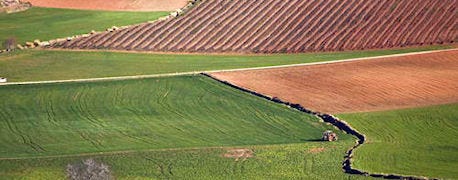
Well maybe they are not making more land. But they are certainly making more land available for harvest.
Brazilian farmers in Mato Grosso state are rapidly expanding double crop corn after soybeans. While double cropping does not create more land, it certainly creates more harvested acres, which from the supply standpoint is the same as creating more land.

MAKING MORE LAND? Brazilian farmers are double-cropping to increase production on the same amount of land
Renato Rasmussen, Rabobank grain analyst based in Sao Paulo, Brazil, told Farm Progress Show attendees Tuesday that Brazil has somewhere between 170 million acres and 250 million acres that could be double cropped. One force driving double crop expansion is relatively high prices. Another is double cropping corn after beans helps ease some disease pressures. New varieties of soybeans that can be harvested earlier allow corn to be planted sooner and therefore grown in a more favorable growing season window than in the past.
Paula Savanti, Rabobank's grain analyst in Buenos Aires, Argentina, points out that China can source corn from South America 40 cents cheaper than from the United States. China can source corn from Ukraine 70 cents cheaper than from the United States. The point? The United States faces plenty of competition.
Savanti expects Argentinian soybean production to rise by 30 to 35% between now and 2020, even if prices hold well below 2012 highs.
Rasmussen expects infrastructure improvements will trim freight costs to ship beans from several interior regions of Brazil to ports by 15% to 20%. Some projects are near completion. Other projects remain on drawing boards.
Evaluate land purchases cautiously
More production – potentially a lot more – coming out of South America will boost grain supplies available to the world. Supply growth has potential to outpace demand growth. If so, prices needed to clear the market will rise. That spells potential down pressure on land values.
Sterling Liddell, Vice President of Rabobank's International Food & Agribusiness Research and Advisory department based in St. Louis, sees rising interest rates as the biggest potential influence on land values.
Potentially rising world grain supplies, potentially sagging grain prices and rising interest rates are three sizable caution signs farmers should consider as they contemplate how much they can pay for land – even if they aren't making any more of it.
About the Author(s)
You May Also Like




